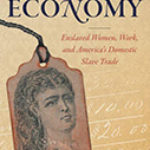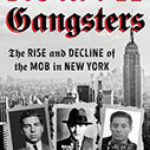An Organ of Murder: Crime, Violence, and Phrenology in Nineteenth-Century America

Author: Courtney E. Thompson
Publisher: Rutgers University Press, 2021. 278 pages
Reviewer: Peter A. Alces ǀ November 2021
Face it, the “majesty” of morality is in its inscrutability. And law does not do inscrutability well. While law, perhaps at its best, strives to reach moral conclusions and vindicate moral results, it does not have (and has never had) a very good sense of (1) what morality is or (2) how to identify the moral even when the law “sees” it (whether it is there or not). The response to those conundrums has been to look for morality where the light seems to be better. For example, from visceral reactions we construct emotional reactions and from emotion we fashion morality and then draw legal lines. But we do not generally acknowledge such a prosaic genesis of the moral; we strive to find some divinity to confirm our visceral, emotional, and moral reactions.
Law depends on objectification: for the law to work, your subjective experience and my subjective experience must meet in an objective middle, and that, of course, is multiplied myriad times when we try to reconcile the subjective reactions of multitudes, as the law must do. The challenge is considerable, daunting even, and rather than confront the inscrutability of morality we would (if we could) equate it with something objective, something that “all of us can see,” at least “can see” once we trust the experts, the scientists, to make it manifest. If only the scientists could answer the difficult questions for us, we could defer to them. Maybe science can even tell us what morality is.
Were “evil” (assuming there is such a discreet thing) indicated by, say, a “mark of Cain,” all we would have to do is find such a mark in order to identify the criminal, the immoral, the infirm. Enter science: while there is no obvious mark of Cain that indicates the depraved, what if there were some similarly discernible physical indicia of depravity, or at least dangerousness? If we could find such objective evidence, and it were accessible, we could reduce human suffering dramatically. And, even more compelling, we could confront what it means to be evil, what it means to be human.
Courtney Thompson tells the important story of one particularly notable effort to objectify the constituents of evil (and the immoral): phrenology. In the nineteenth century, a group of “scientists” reasoned that insofar as what we are is, essentially, what is in our heads, physical examination (or interpretation) of what is on our heads—the contours of our crania—could reveal our moral essence. And revelation of that moral essence could reveal dangerousness, or, at least, reveal the human agent’s propensity to do things that frustrate human thriving in ways that concern the criminal law.
The story of phrenology remains an important and underappreciated one. Professor Thompson’s work locates that story in the intellectual history of brain science, but, even more importantly, she locates it in the history of the criminal law’s engagement with morality. That is a saga that continues to this day and, most recently, has challenged the assumptions of the law.
Over the last twenty years or so, roughly tracing the development of functional magnetic resonance imaging, the law (particularly, though not exclusively, the criminal law) has taken an active interest in what brain function means for human agency. That is, are human agents what the law assumes us to be? Are we moral actors? Do we have free will? Is free will a prerequisite to human agency? These and related questions are now attracting the attention of neuroscientists, lawyers, and philosophers. Almost two hundred years after the dawn of phrenology, contemporary theoreticians are returning to the essential truth discovered and confronted by the phrenologists: if we are nothing more than a collection of neurons and our “choices” are just the confluence of electrical, chemical, and structural incidents beyond choice, then how are we “morally responsible” in the way the criminal law assumes we are? A crucial conclusion of (at least some of) the phrenologists, according to Professor Thompson, was that we are not. That is, phrenology, by objectifying mental processes and predispositions (albeit erroneously), undermined morality. If you do not choose who you are (and you do not), then you do not make moral choices. You are, instead, a victim of neural processes over which you have no control. That changes everything.
Now it does not matter that the phrenologists’ method was wrong, silly even; it is enough that phrenology revealed the incoherence of attributing moral choice (and moral responsibility) to mechanical systems, like us. The necessary conclusion of that way of thinking is that, at least so far as human agents are concerned, there is no such thing as morality—heady stuff, but also a real contribution to, well, everything, certainly everything that the law cares about.
An Organ of Murder is a very good book, at least from the perspective of a legal theorist who respects the contributions intellectual history can make to contemporary dilemmas. If the law does not accurately understand what it means to be human, the law, ultimately, cannot work, or cannot work as well as we need it to work. So long as there is a gap between our understanding of human agency and authentic human agency, law will miss the mark, sometimes more modestly (e.g., legalized gambling) and other times grotesquely (e.g., capital punishment).
The book, both well written and well organized, proceeds logically and the footnotes more than competently tell the story of the author’s careful research. This is a very conscientious work. The personalities who animated the phrenology movement are brought to life and the “science’s” engagement with nineteenth-century criminal law is thoughtfully described. Though we know how the story ends—phrenology turns out to be more like astrology, Tarot card or tea leave reading, or numerology than real science—Professor Thompson helps us understand the attraction of phrenology, for scholars as well as laypersons.
But there may be some room to quibble, admittedly along the lines of “if I had written this book.” The subject is provocative and so provokes response from the conscientious reader. Students of contemporary neuroscience and its relation to law understand that those who resist the materialistic, objective perspective science provides form their objections in either empirical or conceptual terms. The empirical objection is founded on the current limitations of the science, the level of acuity we have so far achieved. Those who posit conceptual objections maintain that there is something inscrutable in material terms about human agency. For the most part, though, critics of the neuroscientific perspective confuse the empirical and the conceptual, claiming that current empirical limitations betrays what is in fact a conceptual error. To confuse the empirical and the conceptual is, of course, error, but to reveal the confusion you need to focus on the terms of each objection. For example, is our current inability to certainly discover the neural signature of psychopathy an empirical or conceptual challenge? Well, the history of science, and certainly the arc of neuroscientific discovery, describes the disintegration of the conceptual into empirical terms. While we do not now know, for sure, “where” psychopathy is located in the brain, we are able to discern empirical commonalities among those whose behavior manifests tendencies we, commonly and helpfully, describe as psychopathic. And it is worthwhile to identify the empirical bases of a certain brain state because then we can (1) identify it and, (2) in time, perhaps, correct it. Phrenology, even in its nascent state, held out for us the hope of breaking the conceptual down into its material and objective constituents to reveal its empirical basis. That is what was important about phrenology and that is what would be revealed by a thoughtful account of the intellectual debate surrounding the “science.”
Professor Thompson acknowledges the controversy surrounding phrenology and offers thorough accounts of the principal actors and their roles. We are also drawn into the personalities whose contributions fixed the contours of the controversy. But what we are missing, at least what we do not find enough of, are the terms of the controversy. While phrenology seems absurd today, it did not seem so two hundred years ago. Smart and important people thought they had discovered something that would reconceptualize human agency. Those who disagreed were just as certain those smart and important people were wrong. An Organ of Murder does not take us far enough into the terms of the debate, at least not far enough for the taste of an admitted “law and neuroscience” enthusiast. So that is the something more that might make this very good book a truly excellent one. But the book is a work of history, by an historian. It is not a philosophical or even jurisprudential inquiry. It probably was not meant to be.
Professor Thompson’s book does what it does quite well. It is an important contribution to the literature. And we might expect that it will be a guide to contemporary legal theory as well. It surely should be.
Peter A. Alces, Rita Anne Rollins Professor of Law, William & Mary Law School


